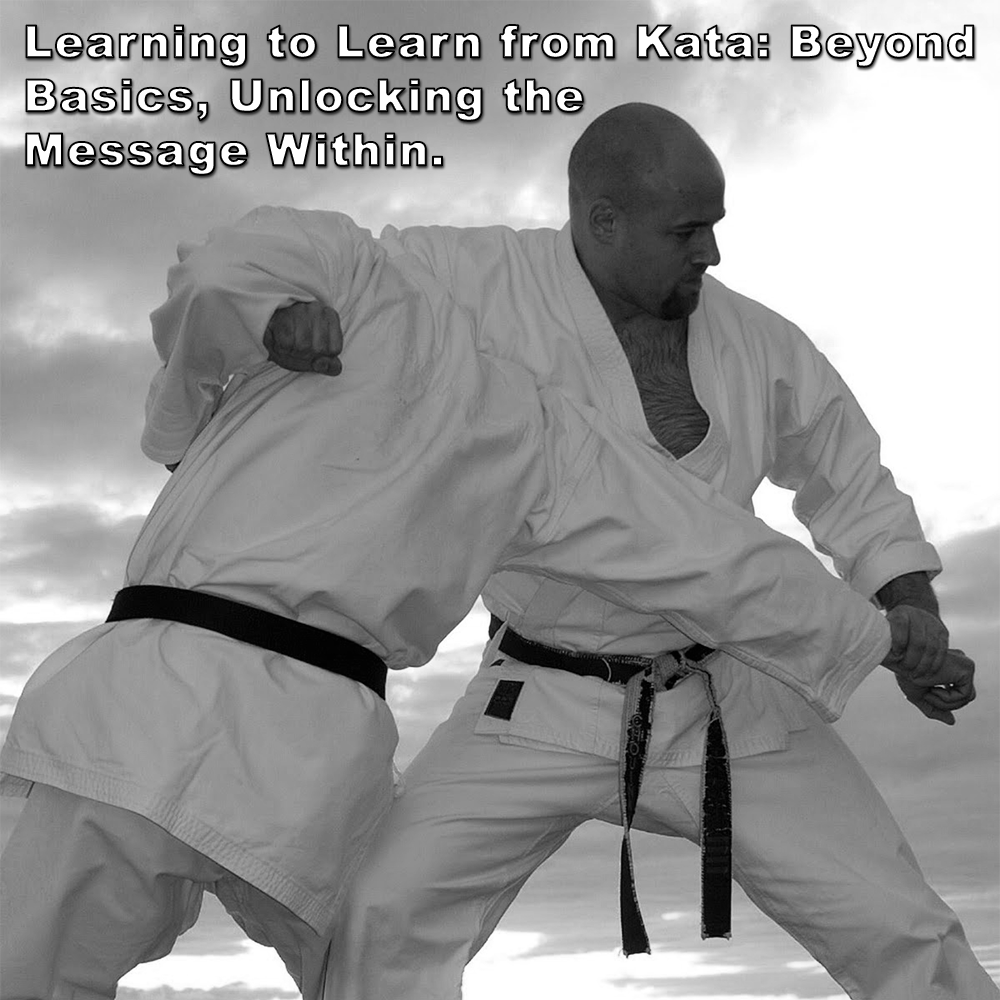
(Approx 2 minute 20 second read)
Kata, often seen as the bane of many karate-ka worldwide, is frequently derided, especially on social media by those who have no real understanding of its purpose. So, what is kata really all about?
.
Many students perform kata without truly understanding its purpose. They focus on making it look as impressive as possible, but the real idea is to learn from kata – to decipher its message.
.
Recently, a reader of my articles was trying to work out the ‘bunkai’ of a kata he was stuck on. He couldn’t understand a series of techniques or their practical applications. This is quite common. Why? Because there is very little guidance on what to look for, especially in modern karate.
.
What is always drilled into students? Basics, basics, and guess what? More basics. While essential, basic techniques may have limitations when it comes to practical self-defense if taught in the typical, rigid manner. This leaves us with a problem: practitioners often search for the ‘technique’ in the kata that matches their basics.
.
Most karate today is technique-based. The extensive terminology in everyone’s curriculum reflects this. However, the lack of exposure to unpredictable and chaotic situations can leave practitioners ill-prepared for real-world confrontations, where there are no rules and attacks are unpredictable. Criminals do not follow predetermined patterns, making it challenging to apply these formal techniques effectively as they are mostly taught.
.
Many of the techniques can be rigid in application with no deviation from its original, which can be beautiful to watch but they may not adapt well to the dynamic nature of real-life self-defense encounters. Particularly when the “name” of the technique is set in stone, the overall movements of both hands, are often ignored or not considered.
.
I’m not suggesting that you forget your prior learning or attempt to modify what you already know. What I am suggesting is that you add to your existing knowledge and look at a different way of doing things.
.
The goal is to learn how to learn from the kata. That is the focus. Once you learn how to do this, you can decipher the message each kata is trying to provide and access the great wealth of knowledge available.
.
The basics of karate are not the end; they are just a piece of the puzzle. You can’t keep looking for technique after technique, because there are way too many variables and scenarios – you would need hundreds of them.
.
Instead, you want to decipher the movements presented to us, not necessarily the way the fundamentals have been taught and practiced from day one.
.
Remember that kata were the styles of their time, created by individuals and sometimes named after them. Each kata has its theme, flavor, strategies, and methods. When the kata were created, they were not designed to be an art form as they are mostly practiced today. The kata are fighting styles – not art.
.
This is important to remember if you are truly looking to find effective applications with your training and analysis. Fighting is ugly; art is beautiful. To be successful at learning from kata, you have to adopt a different mindset.
.
What works for civilian self-defense is intended to be brutal and effective – not artistic. This is tough to understand and accept but required if you want to progress.
.
So, the idea is to learn how to learn from the kata – to decipher the message and integrate it into your training.
.
.
Photo Credit: With thanks to Iain Abernethy
